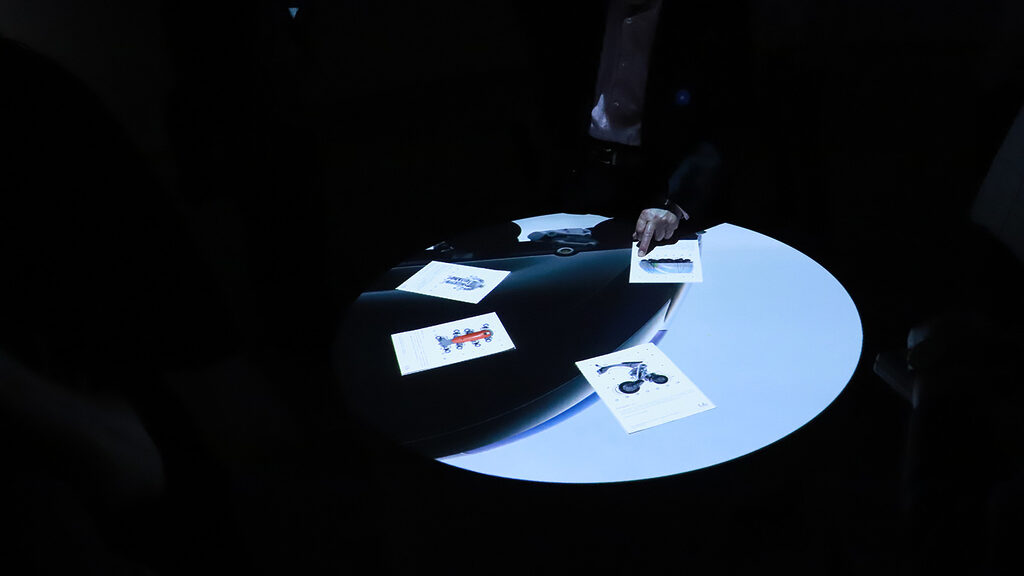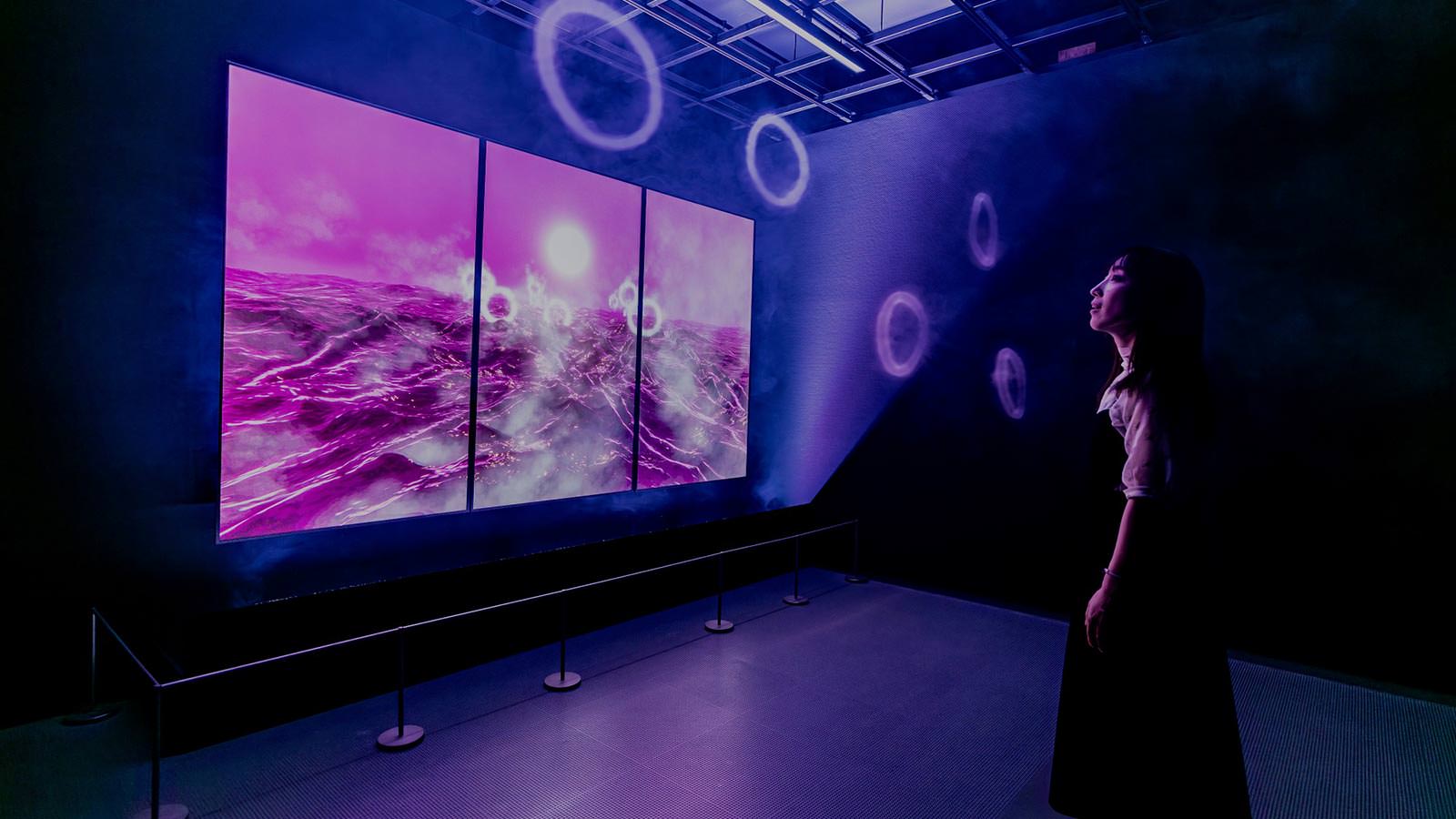
Experience Signs of the Future at the National Museum of Emerging Science and Innovation
Exploring R&D material from the field of art/design (No.5)
The National Museum of Emerging Science and Innovation (Miraikan) has many exhibits, but this time we will focus on "Thinking Backwards from the Future" and "Zero Ichi An", two of them. We asked Ms. Hiromi Miyahara, Acting Director, Science Communication Office, National Museum of Emerging Science and Innovation (Miraikan), about the background and thoughts behind their creation....
2024/10/01
Posted on 10/01/2024
National Museum of Emerging Science and Innovation
Out of the blue, I love science museums. I feel this way especially since I became an adult. I liked them when I was a child, but back then I was so absorbed in the gimmicks of the exhibits themselves that I neglected the essential aspects of what the exhibits were about. On the other hand, as an adult, my scientific knowledge has increased to a certain extent, and I have a deeper understanding of the theory and the background of the exhibits, and I often find myself noticing things.
Therefore, in this issue, we will explore R&D stories from the intersection of art/design in a science museum. We visited the Odaiba, Tokyo-basedThe National Museum of Emerging Science and Innovation (Miraikan)It is a national science museum that opened in July 2001. The National Museum of Emerging Science and Innovation (Miraikan) has a slightly unique feature. It is that "the future" is always at the root of the exhibition themes. Therefore, rather than being an archive of the past, Miraikan's exhibits are focused on something that could happen in the future. It is the perfect place for those who are looking for research and development material.
The National Museum of Emerging Science and Innovation (Miraikan) has many exhibits, but this time we will focus on "Thinking Backwards from the Future" and "Zero Ichi An", two of them. We interviewed Ms. Hiromi Miyahara, Acting Director, Science Communication Office, National Museum of Emerging Science and Innovation (Miraikan), about the background and thoughts behind the production of these exhibits.
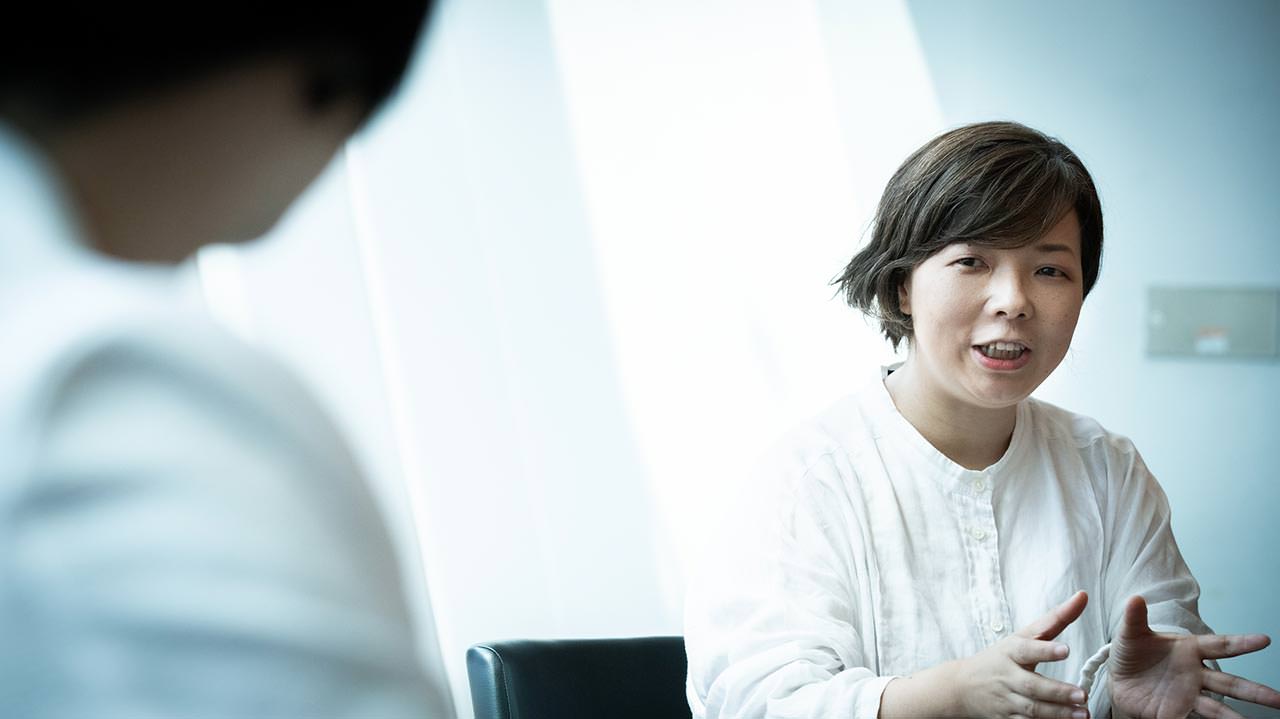
Ms. Hiromi Miyahara, Acting Director, Science Communication Office, National Museum of Emerging Science and Innovation
Experience backcasting through "Future Backward Thinking."
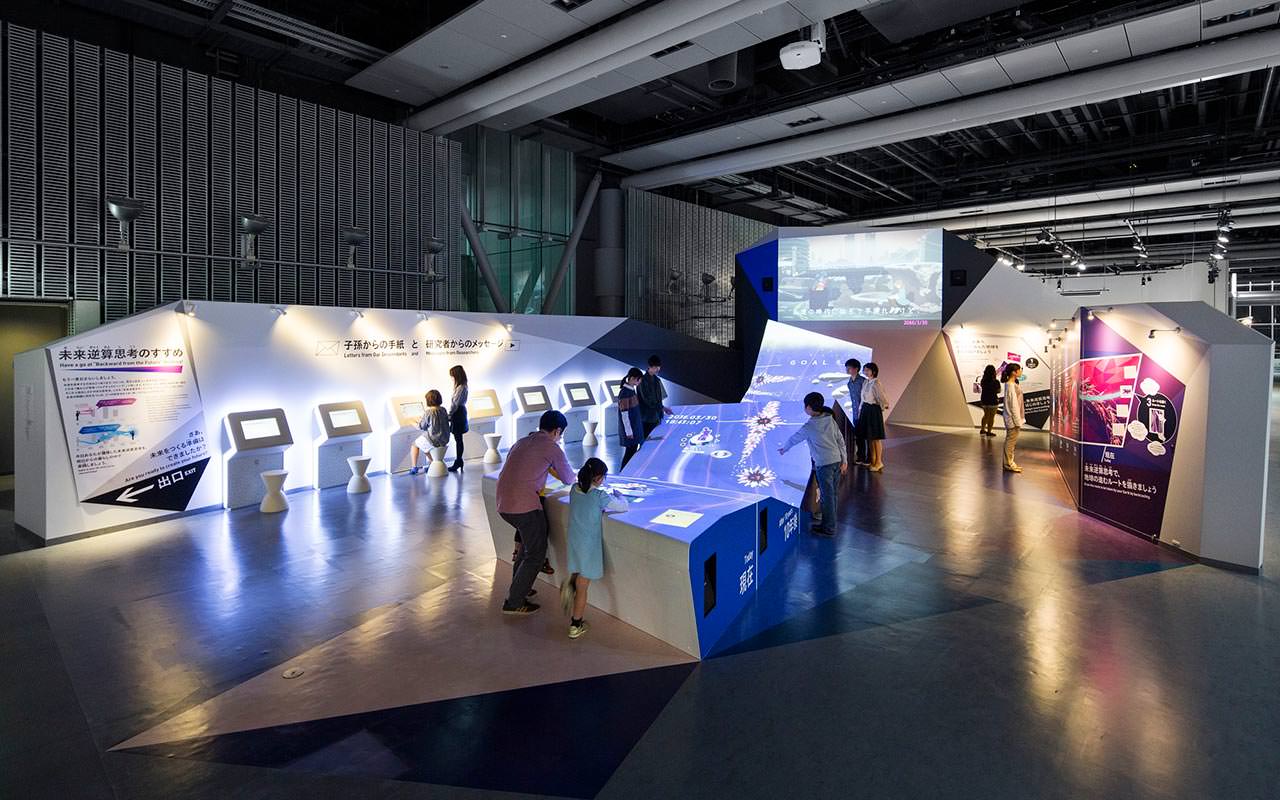
The whole picture of "Thinking Backward from the Future
The "Thinking Backwards from the Future" exhibit is a game-style exhibition that allows visitors to actively experience what kind of earth they can give to their descendants who will be living in 50 years' time.National Museum of Emerging Science and Innovation (Miraikan), official website(from). To experience it, first select "What kind of earth do you want in 50 years? There are eight choices as follows.
- Global Warming Stopped Earth
- Earth where we can drink clean water forever
- A planet where people can live abundantly with energy
- A planet rich in art and culture
- A planet where diversity of language is protected
- A planet where we can continue to eat fish forever
- A healthy planet for everyone
- A planet without inequality and poverty
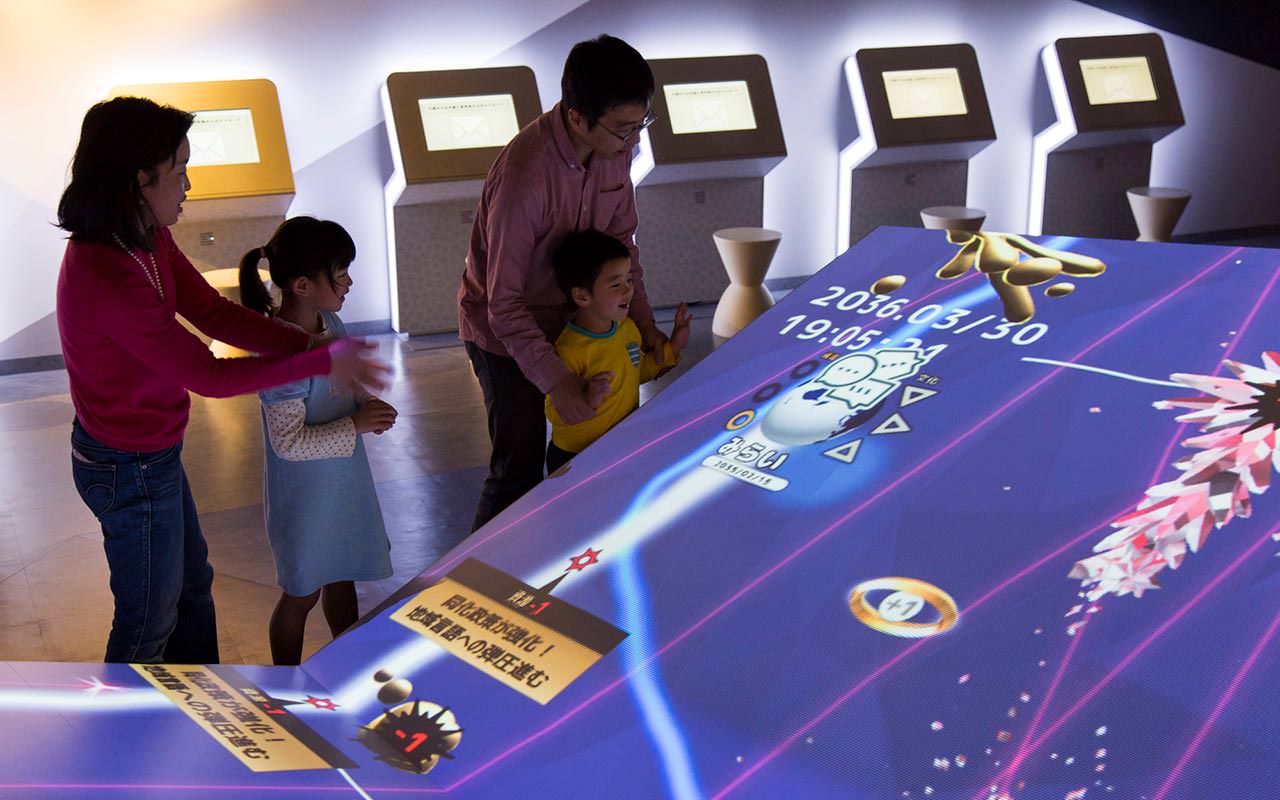
In "Future Reverse Thinking," the "earth" moves along the route you have drawn.
Next, we draw the route necessary to reach the envisioned future of the earth. According to the route, "Earth" proceeds along a path composed of slopes, but there are obstacles along the way, and it may not be reached safely 50 years from now. I chose "an earth full of art and culture," but due to various obstacles, I could only keep my ideal earth until 2068, and I was almost 50 years away...! Finally, I have received letters from my descendants and messages from researchers, which I will read and reflect on.
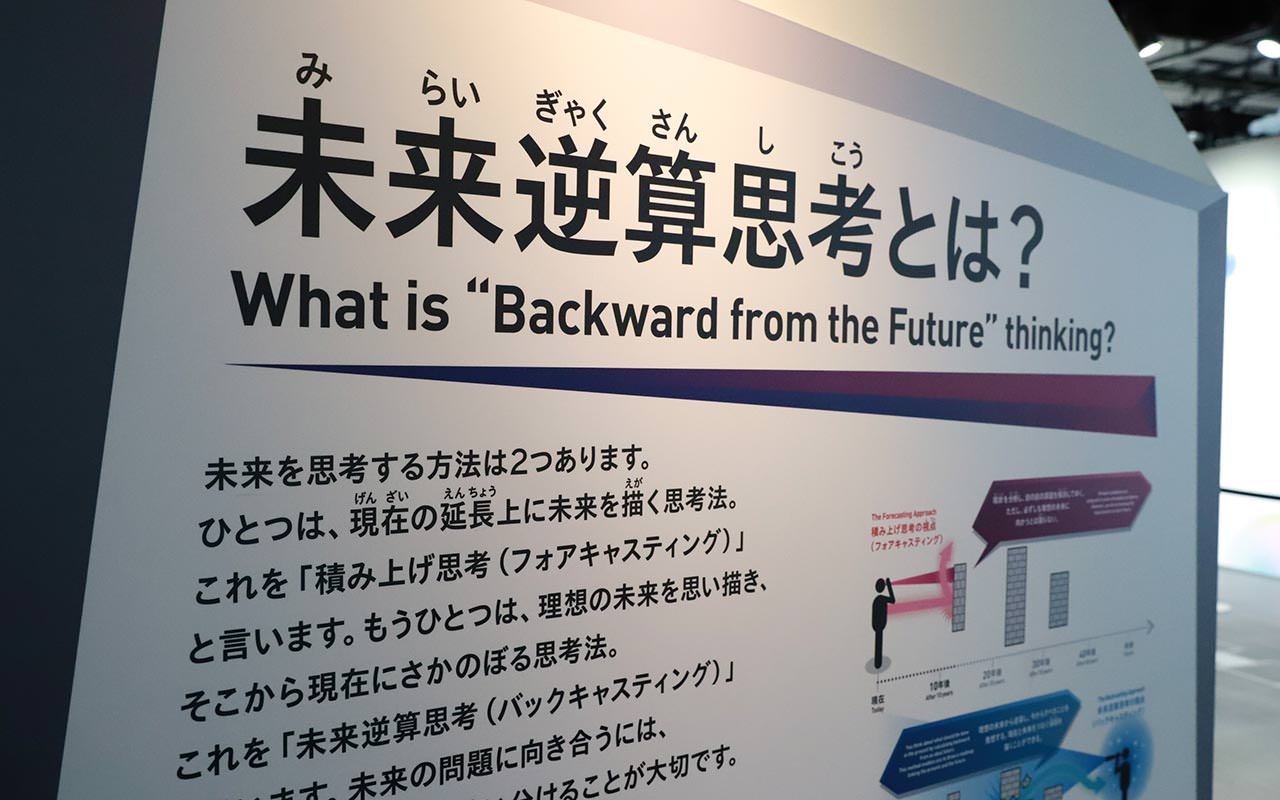
Many of you may have heard of this "future backward thinking" and have probably thought, "Isn't that backcasting? Backcasting, in which the present is considered retroactively from an ideal future vision, is becoming increasingly popular in the business world. Ahead of this trend, the National Museum of Emerging Science and Innovation (Miraikan) started an exhibition on "Future Backward Thinking" in 2016. Furthermore, at that time, we adopted some of the SDGs, which had just been adopted at the UN Summit and were not well known, as our goal, the vision of the Earth 50 years from now.
What impressed me about the "Future Backward Thinking" exhibit is that it does not deny the importance of forecasting (thinking about the future as an extension of the present), which is the opposite of backcasting, but allows visitors to experience the importance of combining both ways of thinking. The path that the envisioned "earth" takes is made up of multiple slopes, so that it is impossible to draw the route that should be taken by looking only at the future point or only at the present point. Backcasting, forecasting, and utilizing "both" rather than "either" will lead to the future. Furthermore, I take my hat off to you for making this small and difficult talk into something that even children can enjoy as if it were a game. I am convinced that game creators participated in the production.
In fact, the "Thinking Backwards from the Future" exhibit will close in January 2025, and will be replaced by an exhibit on "Quantum Computers" in April 2025. Those who wish to experience "Thinking Backwards from the Future" should hurry. The "Quantum Computer" exhibit is still under construction, so there is not much information available to the public yet, but from what I have heard, it is going to be very interesting. Let's wait in anticipation.
Thinking about human perception and society through art at "Zero Iori

The Passage of Ra (The Passage of the Sun), an interactive NFT artwork by A.A.Murakami
Zero Iori" originated from a past project called "Media Lab," which focused on exhibiting media art (a general term for art that utilizes new technologies such as digital technology). Therefore, the name "Zero Iori" is derived from "0" and "1," which evoke digital binary numbers.
The current "Zero Ichian" is "a gallery that considers the ever-changing human perception and society along with science and technology through art works" ("Zero Ichian").National Museum of Emerging Science and Innovation (Miraikan), official website(from), and the exhibited works change on an irregular basis.
On display during my visit was an interactive NFT artwork by artist A.A. Murakami, "The Passage of Ra (Path of the Sun)," which will close to the public on October 6, 2024. When you stand facing the screen, a circular mist flies out from behind you. When the fog hits the screen, it disappears in reality and at the same time appears on the screen and flies away again. The fog, which in reality is a temporary physical phenomenon, becomes a permanent presence in the digital world, and I was drawn in by the sensation of the boundary between reality and the digital world melting away.
The content of the "Zero Ichian" exhibition will continue to change, but in keeping with the concept, there will continue to be works on display that will inspire you and make you want to participate in the exhibition.
There's also a world of blurred boundaries and state-of-the-art robots.
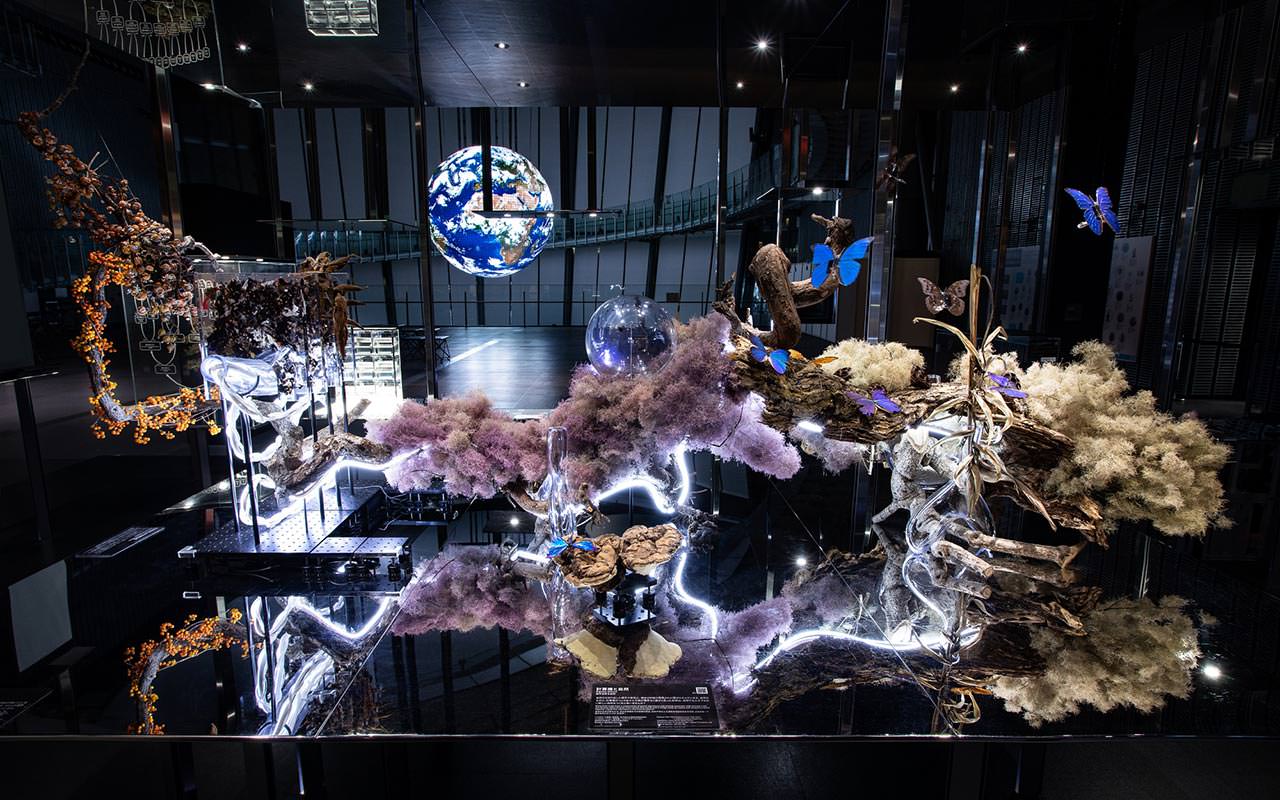
"Computers and Nature, Computers and Nature."
Of course, there are other exhibits to see at the National Museum of Emerging Science and Innovation in addition to "Future Gyakkaku Thinking" and "Zero Iori".
For example, "theComputers and Nature, Computers and NatureThe "Manga" is a new artwork by the artist, Yoichi Ochiai. This exhibition is under the overall supervision and art direction of Yoichi Ochiai, media artist, director of the Digital Nature Development Research Center and associate professor at the University of Tsukuba. Visitors can experience the blurring of the boundary between the real world and the world inside the computer, and sense the signs of a change in conventional values. Various robots are lined up in the "Hello! RobotAt the "Robotics" exhibit, visitors can see and experience not only robots on the market, but also state-of-the-art prototypes.
Where does "foresight" spring from?
The more one learns about Miraikan, the more one cannot help but feel its antennae for the future. One of the reasons for this "foresight" is the fact that Miraikan is managed byJapan Science and Technology Agency(JST) is working on,Research and Development Strategy Center(CRDS), an organization that serves as a think tank for national science and technology innovation policy. In other words, the National Museum of Emerging Science and Innovation (Miraikan) is an environment where front-line research information related to social trends and policies is easily accessible. Mr. Miyahara says, "Among the many national science policies, we pick up what we want our guests to know the most and what we think is the most important and curate it for them. It is gratifying to know that they are making what cutting-edge researchers think about accessible to the general public like me to understand and experience.
As a side note, while I was touring the National Museum of Emerging Science and Innovation, I passed many elementary and junior high school students, perhaps on a field trip. I looked at them with envy and thought to myself, "Wow, they can grow up with this exhibition of cutting-edge technology as their first-hand experience.
We encourage our readers to visit Miraikan and experience the future.
National Museum of Emerging Science and Innovation
- address (e.g. of house)
- 2-3-6 Aomi, Koto-ku, Tokyo
- Hours of Operation
- 10:00 - 17:00 (Ticket purchase and reception by 16:30)
- closed day
- Tuesdays (open if Tuesday is a national holiday), December 28 - January 1
- For more information.Official Sitefor more information.
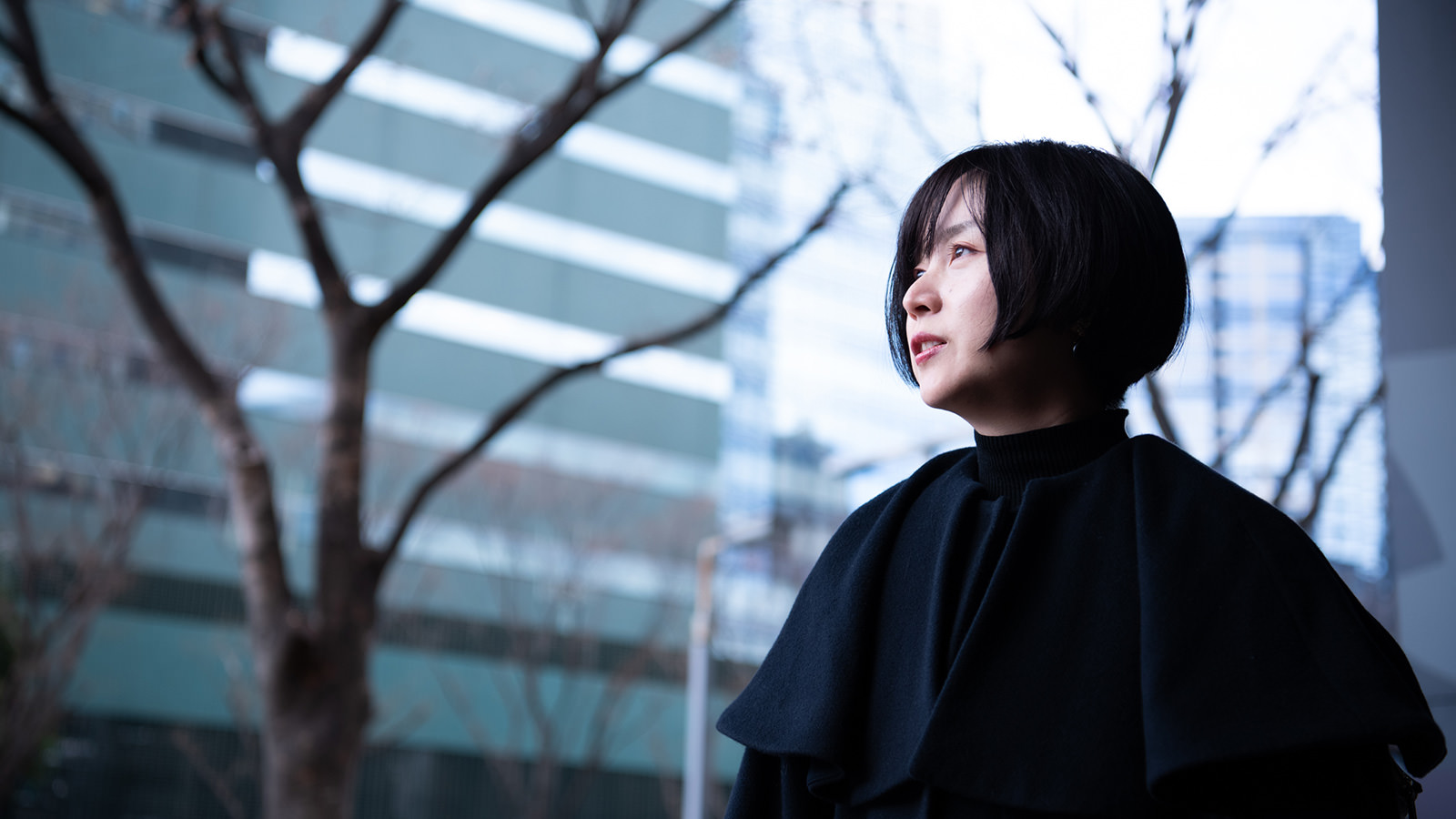
Masayo Yaso
Manager, Corporate Planning Department, Information Technology Development, Inc.
Graduated from Waseda University, Faculty of Letters I with a specialization in Art History, and received an MBA from the Graduate School of Business Administration (Waseda Business School), Waseda University. After working in technical research departments, new business teams, and marketing/promotion planning positions, he assumed his current position, concurrently serving as editor-in-chief of "Schrodinger's Wednesday" from April 2024.


